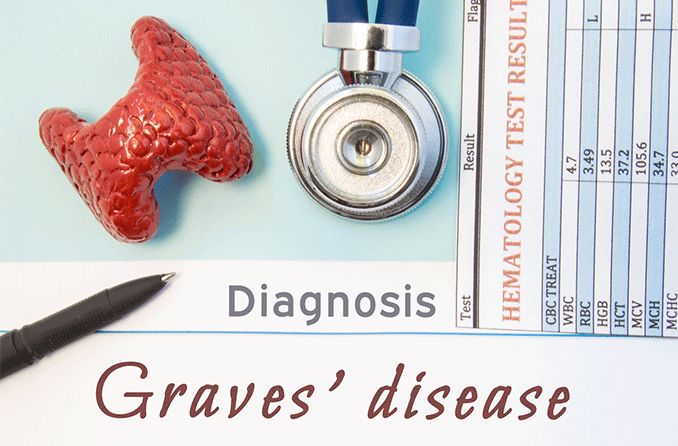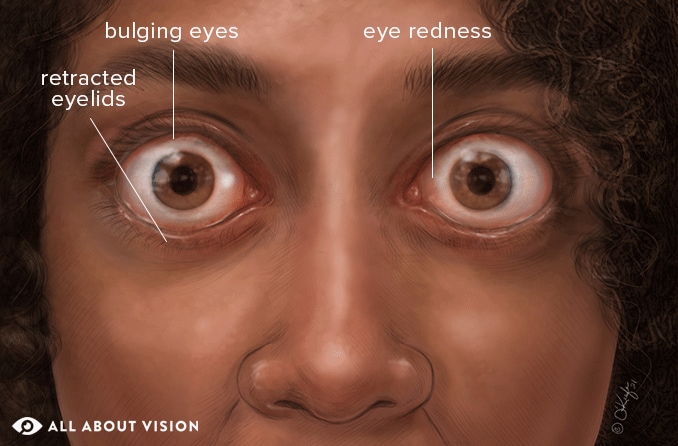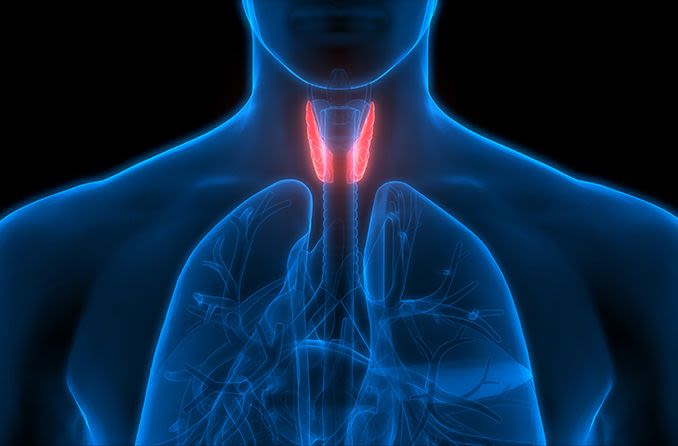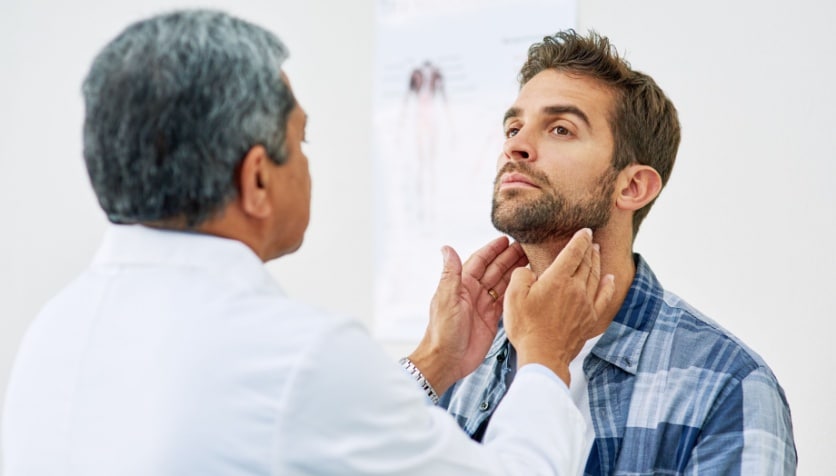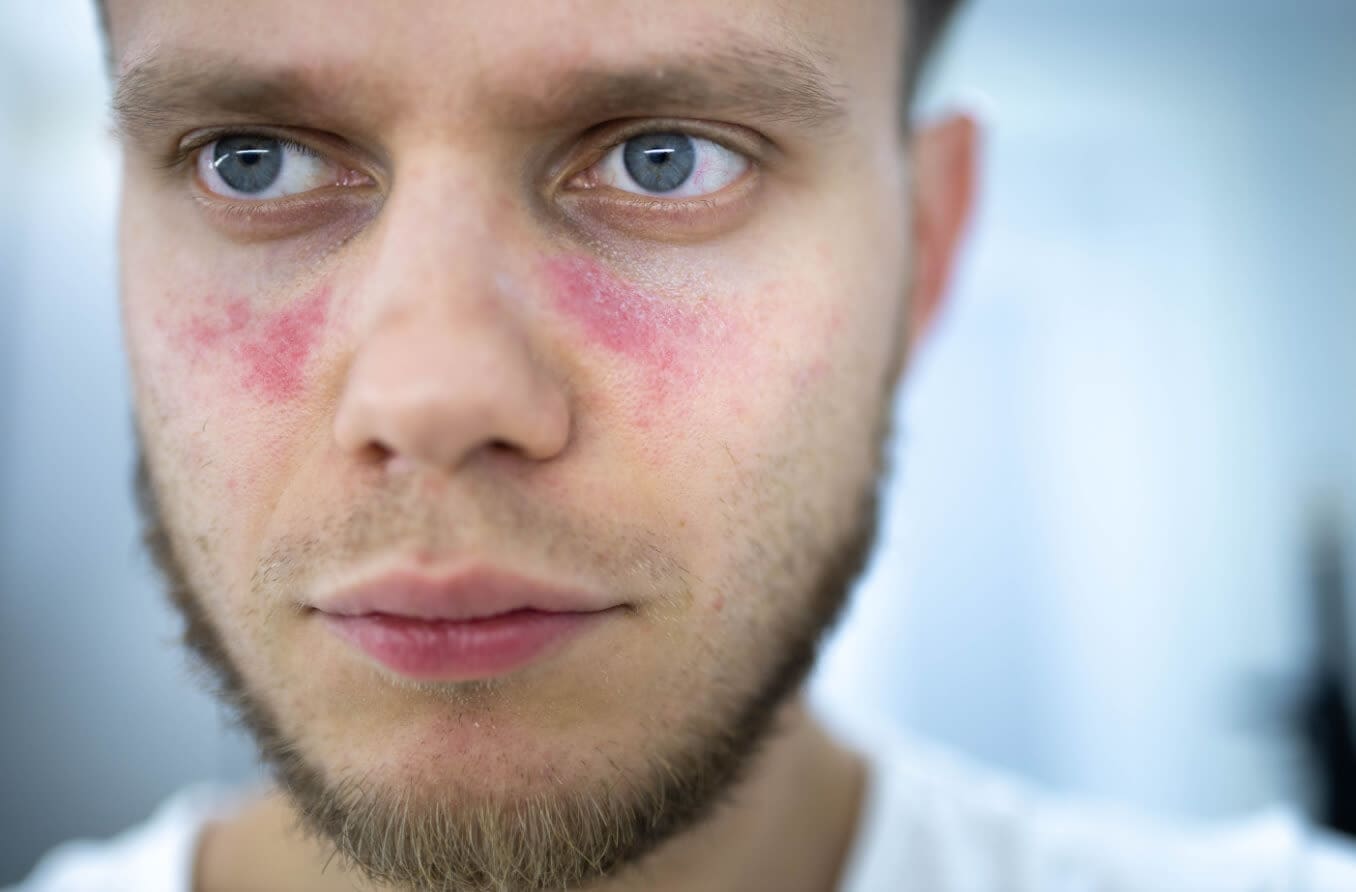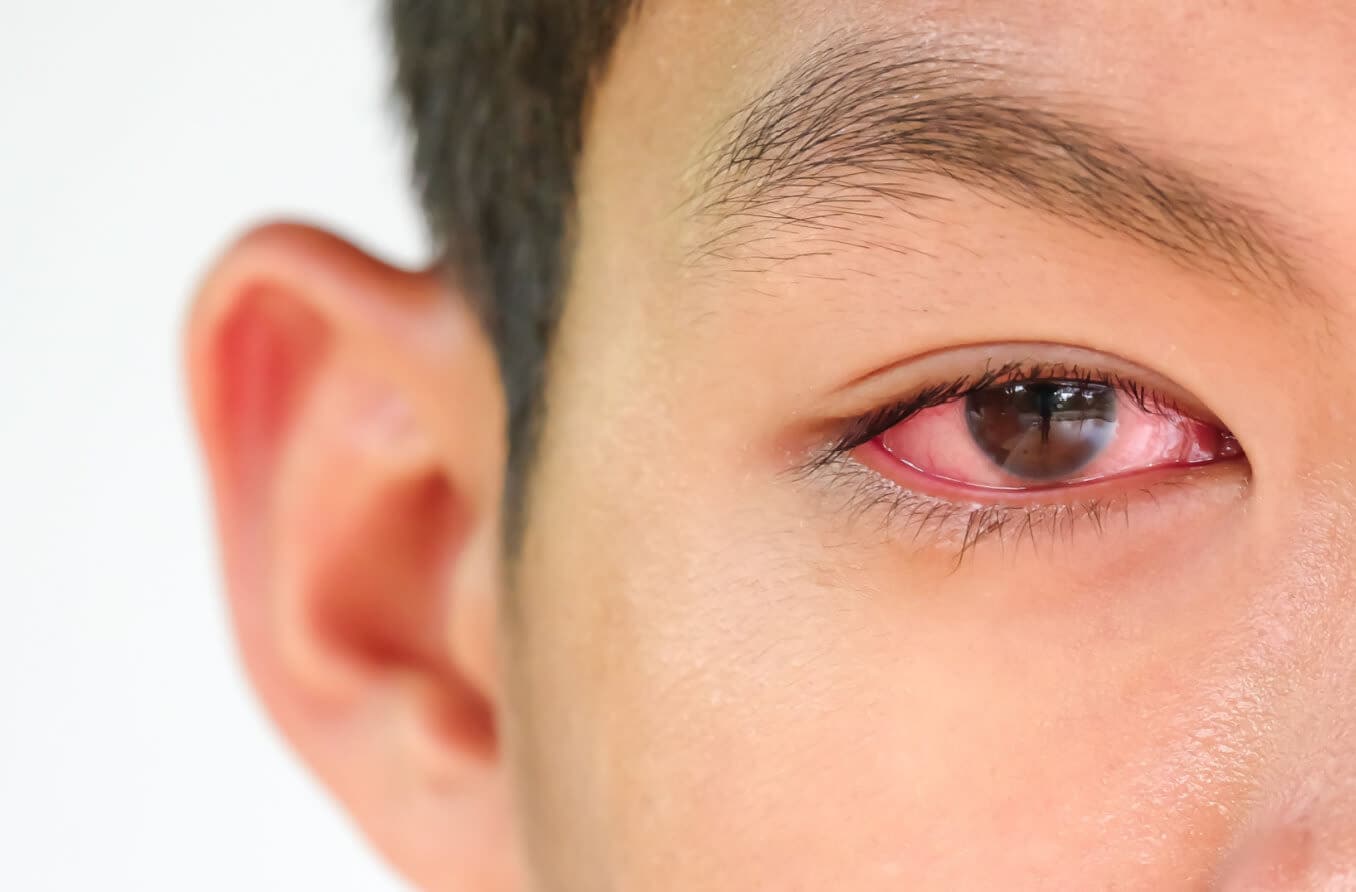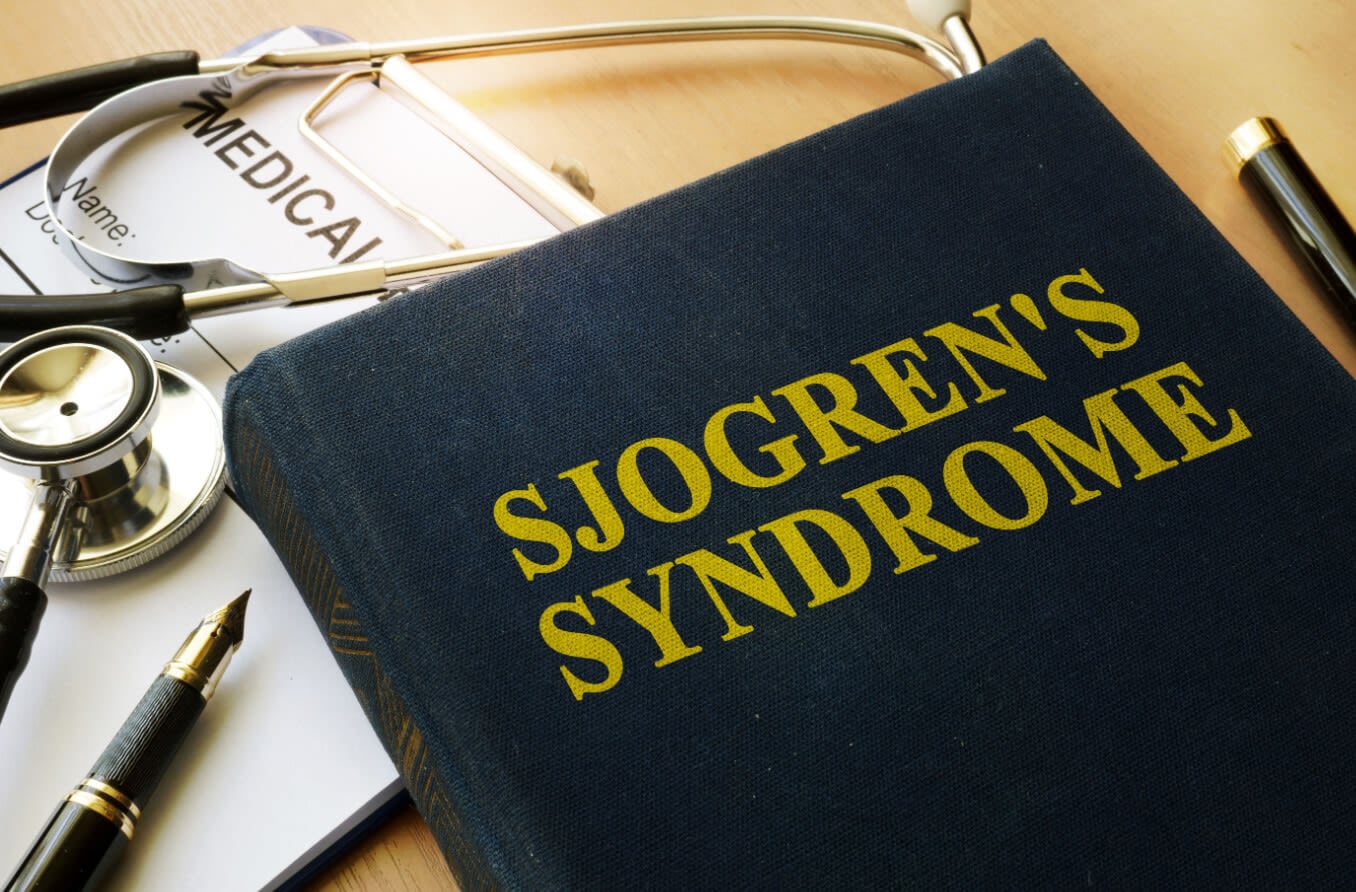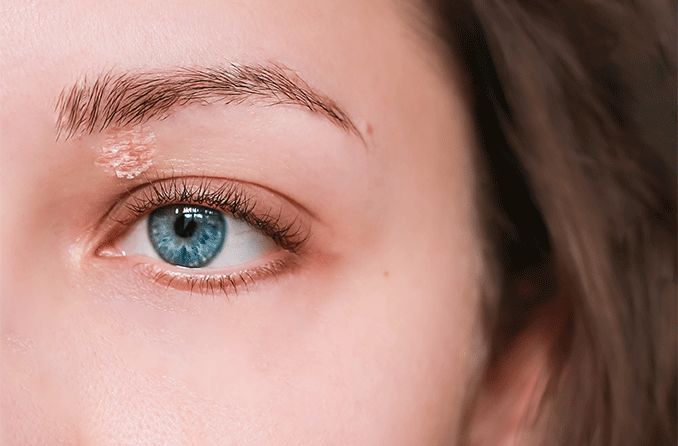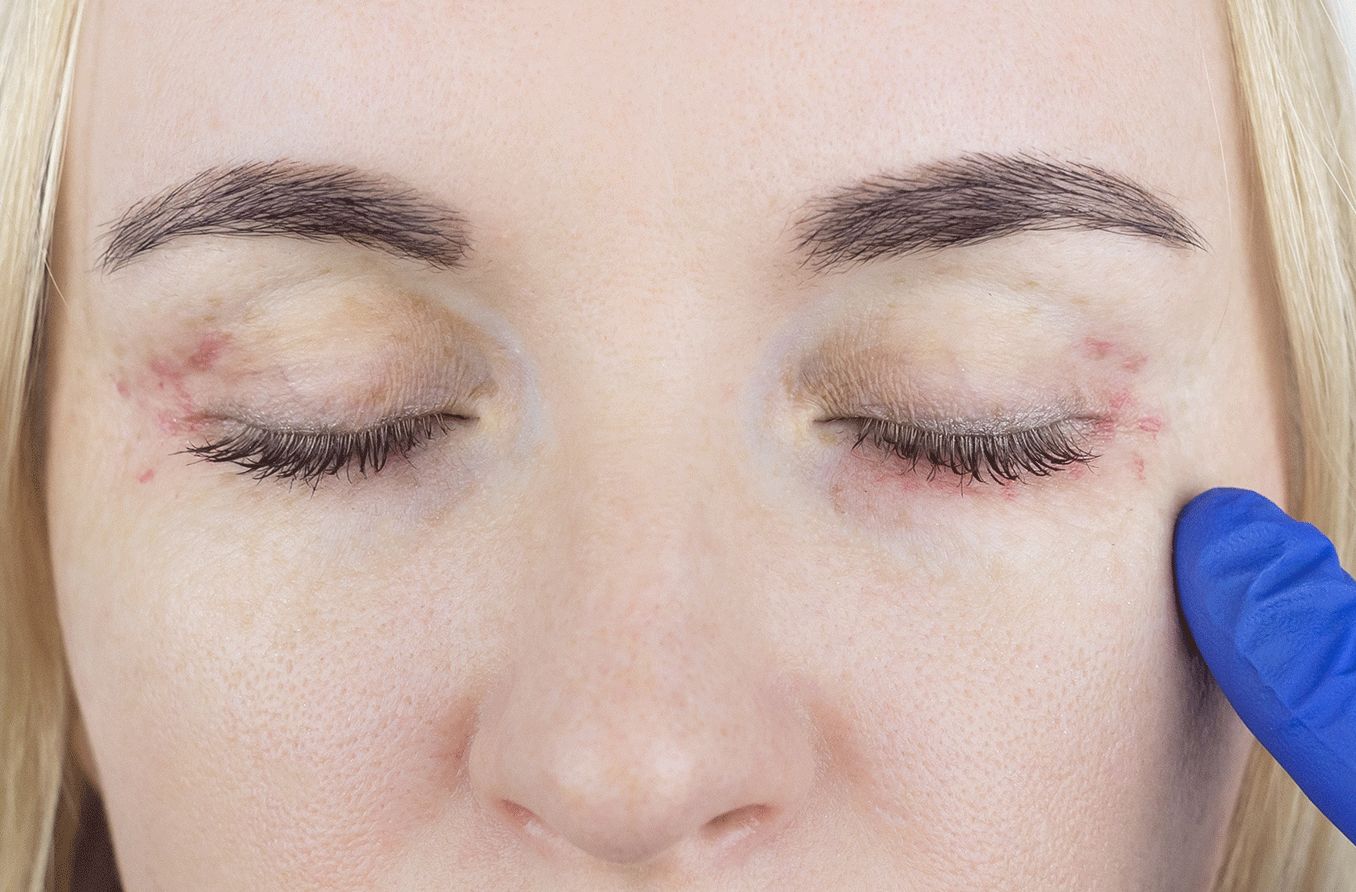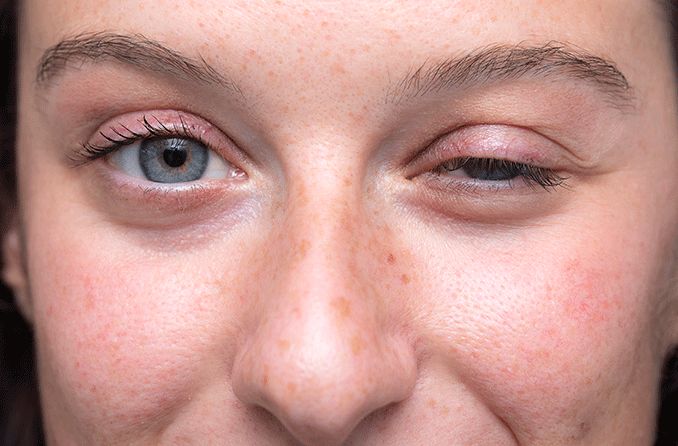It’s important to get prompt treatment for Graves’ disease. Without treatment, hyperthyroidism can lead to blood clots, heart problems, stroke, osteoporosis and pregnancy complications like miscarriage or low birth weight.
Untreated or improperly treated Graves’ disease also can cause a health emergency known as a thyroid storm. A thyroid storm is a sudden surge of thyroid hormone that can cause symptoms such as:
The main goal of treatment is to stop the thyroid from making too much thyroid hormone and to reduce symptoms. Treatments include medication, surgery and radioiodine therapy.
Medication
Antithyroid medicines. The least invasive treatment for Graves’ disease, antithyroid medications, lessen the amount of hormone the thyroid makes. Common antithyroid medications include methimazole and propylthiouracil. A doctor may choose propylthiouracil for patients in the first trimester of pregnancy due to a lower risk of birth defects.
Both drugs gradually make the thyroid less active and lower the amount of hormones the thyroid makes. It can take weeks or months to get thyroid hormone levels into a normal range. You may have to take antithyroid medicine for one to two years or longer if you decide not to have surgery or radioiodine therapy.
You should tell your doctor if you have any side effects after you start taking antithyroid medications. Side effects may include:
It’s very uncommon, but antithyroid medications can cause serious problems such as liver failure. These medicines can also reduce the number of white blood cells, which may lead to an infection.
Beta-blockers. Doctors sometimes prescribe beta-blockers to ease symptoms while antithyroid medicines are starting to work. Beta-blockers are drugs that are usually used to lower blood pressure and prevent heart attacks. These drugs block the effects of thyroid hormone and can reduce some symptoms right away.
Radioiodine therapy
Another treatment option is radioiodine therapy. This treatment cannot be used for pregnant patients because it can harm the fetus. In radioactive iodine therapy, you take radioactive iodine by mouth. This therapy destroys the thyroid slowly without surgery. Most patients who get radioiodine therapy will develop an underactive thyroid and will need to take thyroid hormones daily.
Surgery
Some patients have a very enlarged thyroid (goiter) or have serious side effects from antithyroid medications. In these cases, a doctor may recommend surgery to take out the thyroid.
Thyroid surgery for may involve removing all of the thyroid (thyroidectomy) or part of the thyroid (subtotal thyroidectomy). It’s important to choose a doctor who has experience with thyroid surgery.
Risks of thyroid surgery include:
Patients who have had all or part of their thyroid removed will need to take thyroid hormones every day for life and get their thyroid hormone levels checked regularly.
